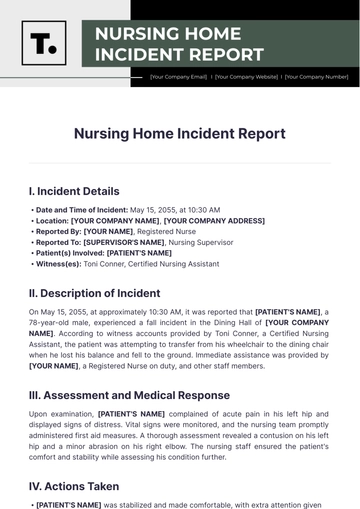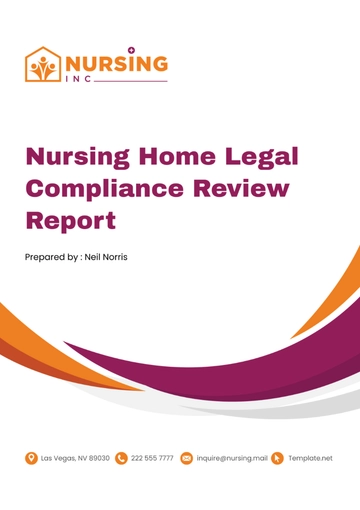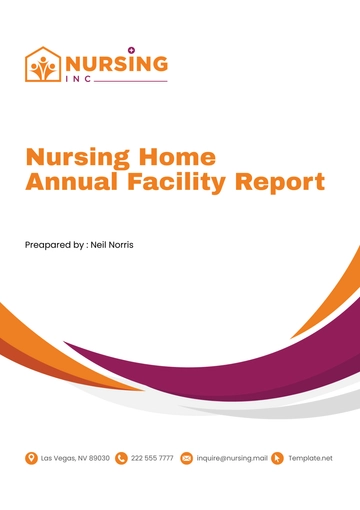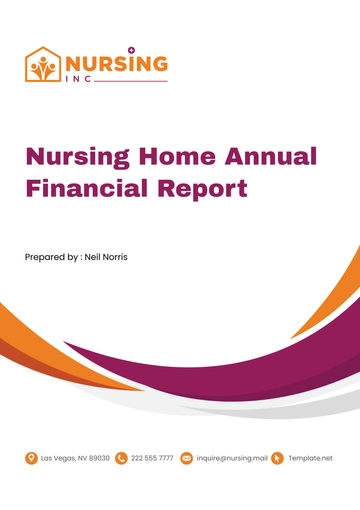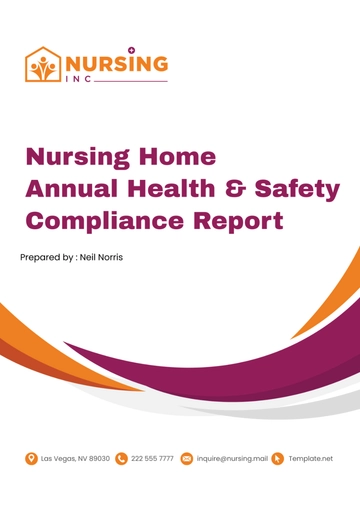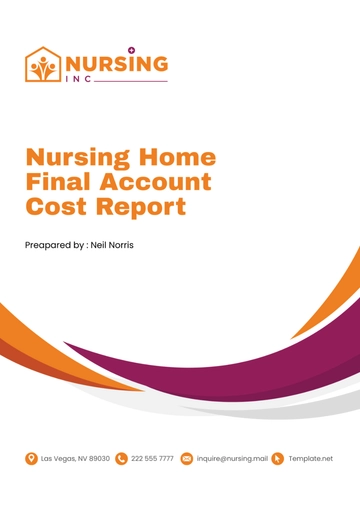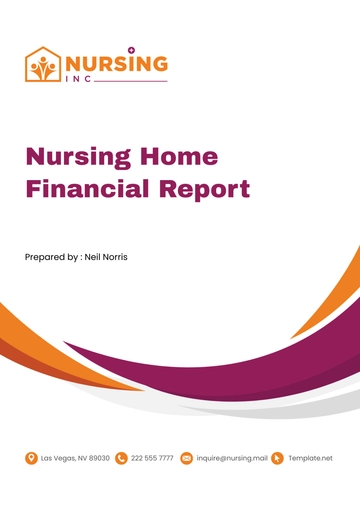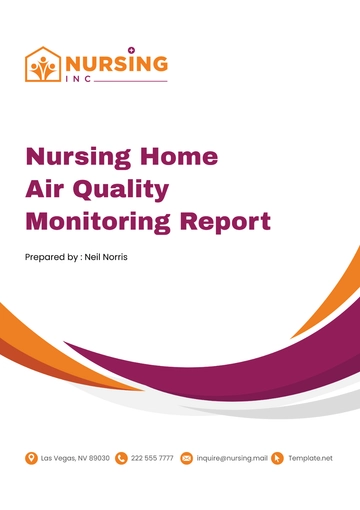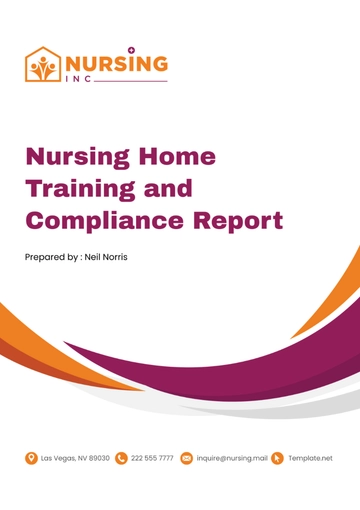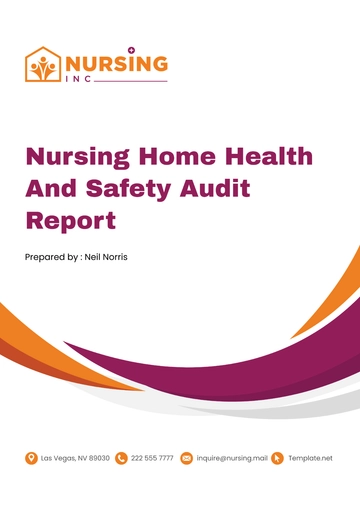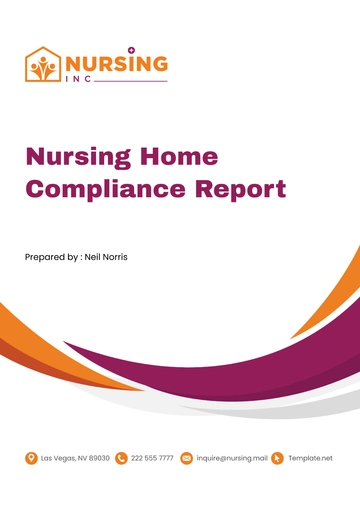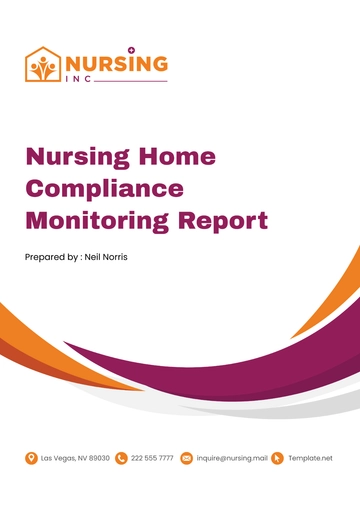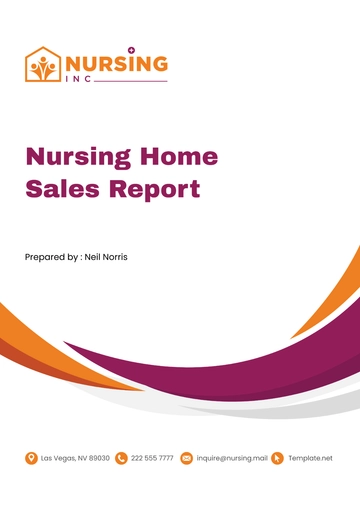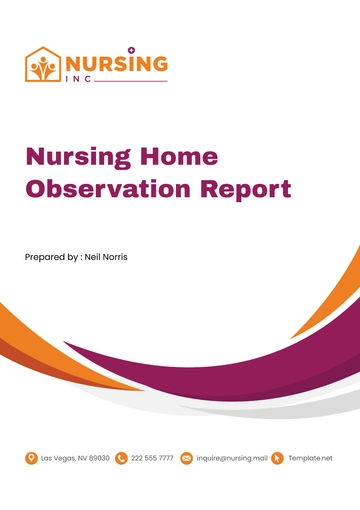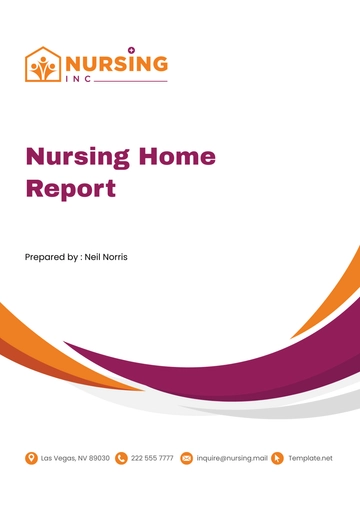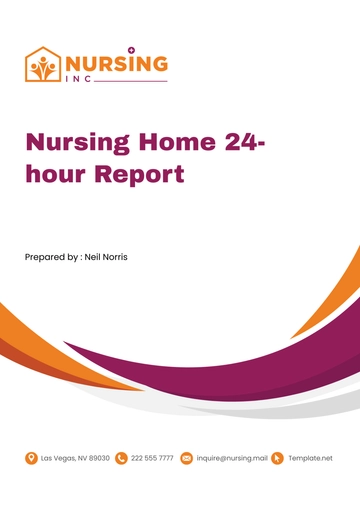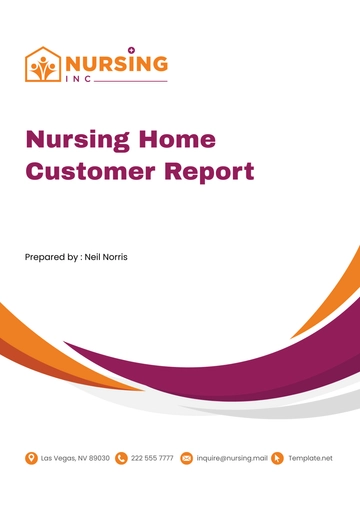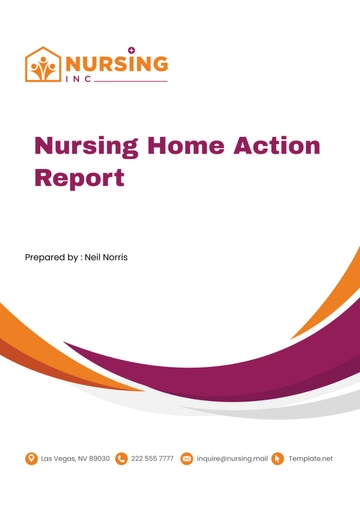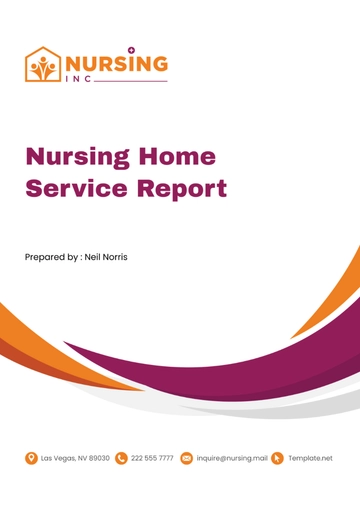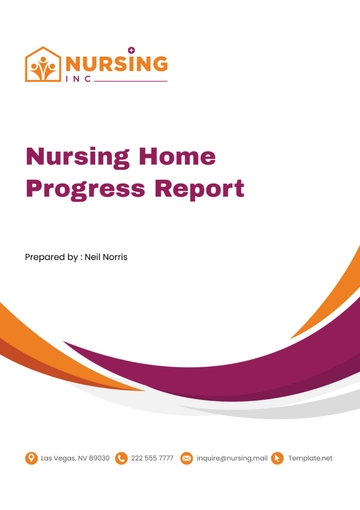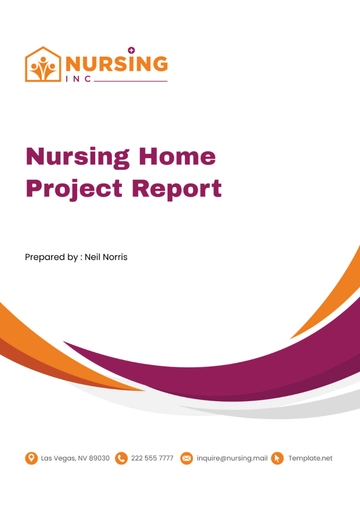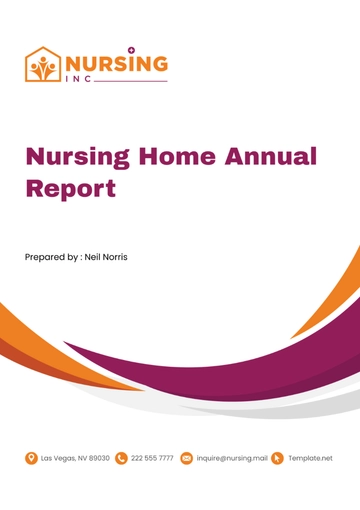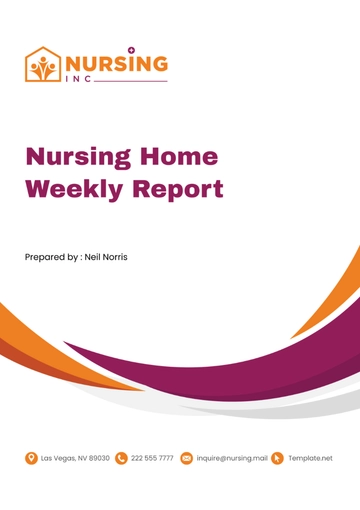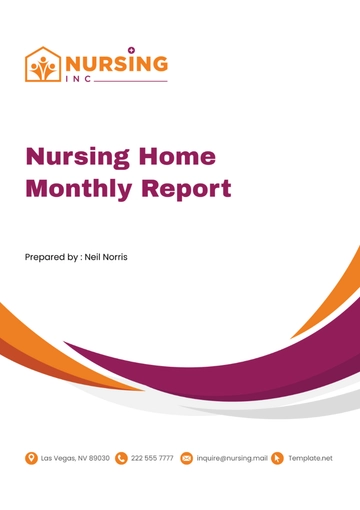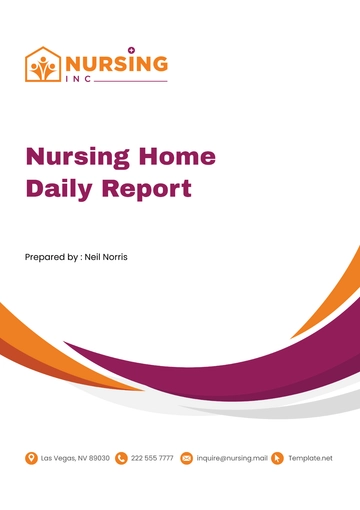Free Nursing Home Health And Safety Audit Report
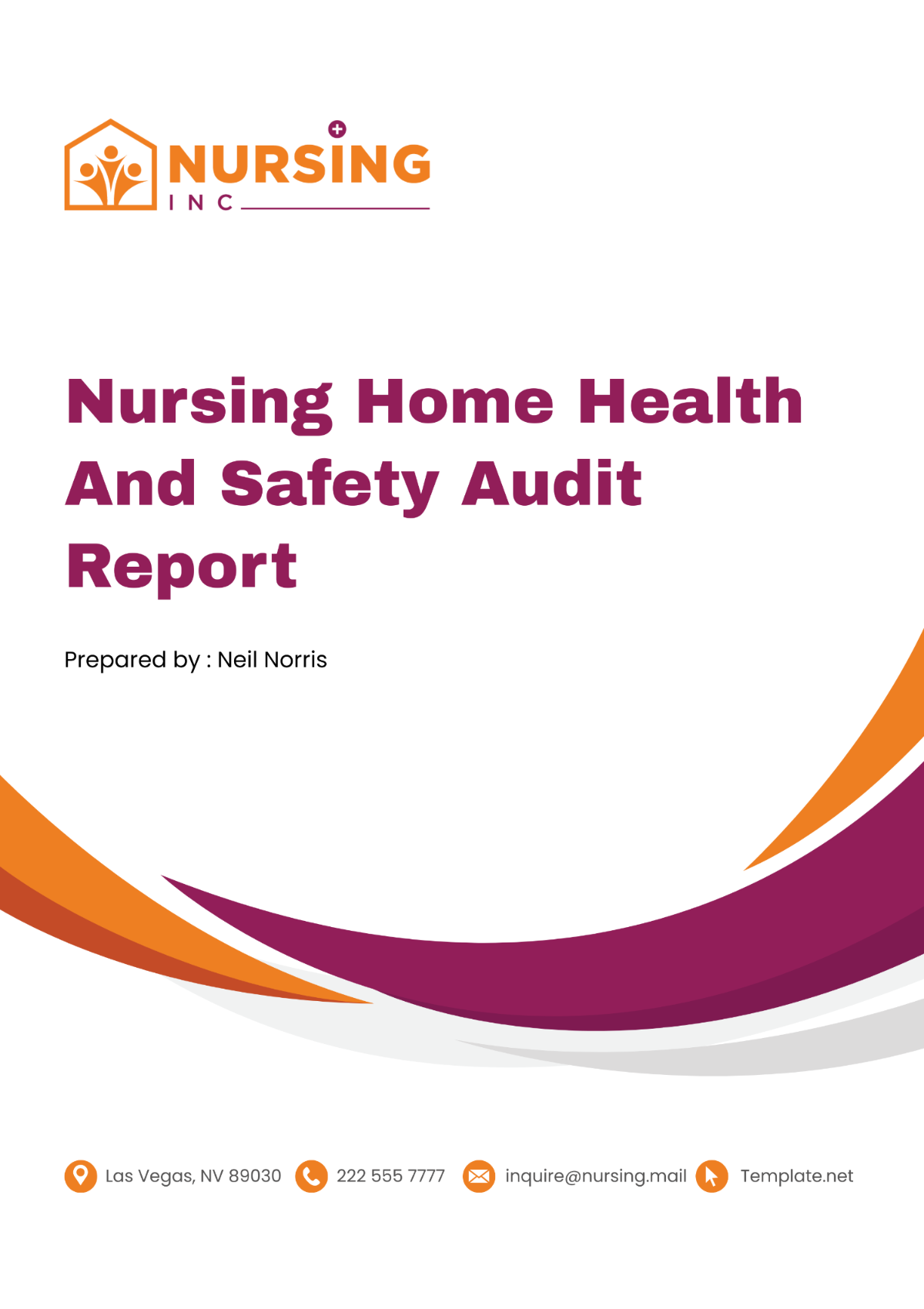
I. Executive Summary
The essence of this Nursing Home Health and Safety Audit Report is to scrutinize and enhance the health and safety measures currently in place, with the ultimate goal of safeguarding the well-being and security of both the residents and the workforce. In this extensive evaluation, we meticulously observed daily routines, dissected procedural frameworks, engaged in conversations with the staff, and measured the adherence to health and safety regulations. Our investigation is rooted in a desire to unearth potential lapses and to formulate both corrective actions and preventive measures that align with national health and safety benchmarks.
In the journey towards achieving an exemplary care environment, this report does not merely catalog our findings; it also charts a course for amelioration, backed by the rigor of national standards. It is our belief that through a collaborative effort to address the identified areas of concern, we can fortify the foundation of health and safety within the nursing home. This report is intended as a beacon to guide improvements, ensuring that every resident and staff member is accorded the protection and care they deserve.
II. Methodology
Our audit methodology was both exhaustive and meticulous, designed to provide a panoramic view of the health and safety landscape within the nursing home. By embedding ourselves within the daily operations, we were able to gain firsthand insights into the procedural dynamics at play. Document review offered a lens into the formalized policies and practices, while staff interviews opened a dialogue for understanding the practical challenges and perceptions regarding health and safety.
Benchmarking against the Health and Safety at Work Act, the Care Quality Commission (CQC) standards, and local health codes, we crafted a framework for our evaluation that was both comprehensive and nuanced. This allowed us to cast a wide net over crucial areas including hygiene maintenance, the safety of equipment, emergency preparedness, and the efficacy of staff training programs, particularly in the context of infectious disease management like COVID-19.
Through this multifaceted approach, we sought not just to audit but to understand deeply, enabling us to pinpoint discrepancies between practice and policy, and to identify both strengths to be built upon and vulnerabilities to be addressed.
III. Audit Findings and Recommendations
Before delving into the specifics of our findings and recommendations, it is essential to underscore the importance of hygiene practices within the nursing home. Our observations have shed light on key areas requiring immediate attention to align with standard guidelines and ensure the health and safety of both residents and staff. The table below outlines these critical observations, juxtaposes them with the expected standards, and suggests actionable recommendations to bridge the gaps identified.
Hygiene Practices
Observations | Standard Guidelines | Recommendations |
|---|---|---|
Hand sanitation stations were not frequently used by staff. | Hand sanitation is required after every contact with residents or their belongings. | Reinforce hand hygiene practices and monitor adherence to this guideline. |
No regular deep cleaning schedule appeared to be in place. | Deep cleaning should be done at least once a week. | Implement a regular deep cleaning schedule and ensure adherence. |
Deteriorating areas, prone to bacterial growth were noticed. | A CQC standard requires premises to be kept in a good state of repair. | Maintain and repair those areas immediately and check for other potential areas. |
IV. Safety Measures
Ensuring the safety of both residents and staff in a nursing home requires a multifaceted approach, addressing everything from the physical environment to the preparedness of personnel in emergency situations. Our audit of safety measures has uncovered several areas where current practices fall short of optimal standards. This section of the report not only highlights these findings but also offers a comprehensive strategy for enhancing safety protocols within the facility.
Equipment and Facility Safety
Findings: The audit revealed that equipment used for elderly care is not subjected to regular inspections for potential hazards, posing a significant risk to both residents and staff. Moreover, the physical layout and maintenance of the facility did not fully support the safety and mobility needs of the elderly population, with specific concern regarding the accessibility of fire extinguishing equipment.
Recommendations:
Regular Safety Inspections: Implement a systematic schedule for inspecting all care-related equipment and facility infrastructures. This should include checks for wear and tear, functionality, and any potential hazards that could compromise safety. These inspections should be documented meticulously, with findings promptly addressed.
Accessibility Improvements: Ensure that all safety equipment, especially fire extinguishers, are located in easily accessible areas, free from obstructions. The layout of the nursing home should be evaluated and modified as necessary to improve navigability, especially for residents with mobility issues.
Emergency Preparedness
Findings: The nursing home’s emergency preparedness was found lacking in several critical areas. Notably, emergency drill practices did not clearly establish evacuation routes, and staff members were not adequately trained to handle various emergencies, including medical crises and fire outbreaks.
Recommendations:
Emergency Evacuation Plans: Develop and communicate clear, well-marked emergency evacuation routes throughout the facility. These plans should be tailored to the specific needs of the elderly population, considering mobility limitations and other health concerns. Regular drills should be conducted to ensure both staff and residents are familiar with evacuation procedures.
Comprehensive Emergency Training: Establish a regular training program for all staff members that covers a wide range of potential emergencies, from medical crises to natural disasters. This training should include first aid, CPR certification, fire safety procedures, and protocols for managing infectious disease outbreaks. Participation in these training sessions should be mandatory, with refresher courses provided on an annual basis.
Health Protocols and Infection Control
Findings: The adherence to social distancing norms and personal protective measures, critical in the context of infectious diseases like COVID-19, was inconsistently applied. This inconsistency puts residents and staff at unnecessary risk of illness.
Recommendations:
Strengthening Infection Control Practices: Reinforce the importance of strict adherence to infection control protocols, including the use of personal protective equipment (PPE) and the practice of social distancing wherever possible. Clear guidelines should be established and communicated, detailing when and where PPE should be worn, as well as the layout and management of communal spaces to allow for social distancing.
Regular Health Screenings: Introduce regular health screenings for both residents and staff as a preventative measure against the spread of contagious diseases. This should include temperature checks, symptom reporting, and, when necessary, testing for infectious diseases.
Continuous Improvement and Compliance
To ensure these recommendations are not only implemented but sustained, the nursing home should establish a continuous improvement process that includes regular audits, feedback mechanisms for staff and residents, and a compliance monitoring system. Leadership should demonstrate a clear commitment to safety by allocating resources for training, infrastructure improvements, and health protocols.
Moreover, engaging residents and their families in safety discussions can foster a culture of transparency and shared responsibility for health and safety. This collaborative approach ensures that safety measures are not only about compliance but about creating a genuinely secure and caring environment for all.
Addressing the identified gaps in safety measures requires a concerted effort and ongoing commitment from all stakeholders within the nursing home. By taking proactive steps to enhance equipment safety, emergency preparedness, and health protocols, the facility can significantly improve the safety and well-being of its residents and staff.
V. Conclusion
The audit revealed a commendable level of commitment to health and safety from the nursing home, yet highlighted significant areas requiring immediate attention and improvement. Addressing these issues is not just critical for ensuring the safety and health of residents and staff but also for maintaining compliance with the Health and Safety at Work Act, CQC standards, and local health codes.
Implementing the detailed recommendations will substantially elevate the safety and health standards of the facility. It also positions the nursing home to adapt more readily to evolving regulations and unexpected challenges. We are optimistic that these improvements will underscore the nursing home's ongoing dedication to health and safety excellence.
Prepared by: [YOUR NAME]
On behalf of: [YOUR COMPANY NAME]
- 100% Customizable, free editor
- Access 1 Million+ Templates, photo’s & graphics
- Download or share as a template
- Click and replace photos, graphics, text, backgrounds
- Resize, crop, AI write & more
- Access advanced editor
Elevate safety standards in nursing homes with our Nursing Home Health and Safety Audit Report Template! Designed by Template.net, this editable template offers comprehensive assessment tools. Utilize our AI editor tool to customize reports seamlessly, addressing specific facility requirements. Streamline audits, identify risks, and enhance resident well-being with this essential resource for ensuring regulatory compliance and fostering a safe environment.
You may also like
- Sales Report
- Daily Report
- Project Report
- Business Report
- Weekly Report
- Incident Report
- Annual Report
- Report Layout
- Report Design
- Progress Report
- Marketing Report
- Company Report
- Monthly Report
- Audit Report
- Status Report
- School Report
- Reports Hr
- Management Report
- Project Status Report
- Handover Report
- Health And Safety Report
- Restaurant Report
- Construction Report
- Research Report
- Evaluation Report
- Investigation Report
- Employee Report
- Advertising Report
- Weekly Status Report
- Project Management Report
- Finance Report
- Service Report
- Technical Report
- Meeting Report
- Quarterly Report
- Inspection Report
- Medical Report
- Test Report
- Summary Report
- Inventory Report
- Valuation Report
- Operations Report
- Payroll Report
- Training Report
- Job Report
- Case Report
- Performance Report
- Board Report
- Internal Audit Report
- Student Report
- Monthly Management Report
- Small Business Report
- Accident Report
- Call Center Report
- Activity Report
- IT and Software Report
- Internship Report
- Visit Report
- Product Report
- Book Report
- Property Report
- Recruitment Report
- University Report
- Event Report
- SEO Report
- Conference Report
- Narrative Report
- Nursing Home Report
- Preschool Report
- Call Report
- Customer Report
- Employee Incident Report
- Accomplishment Report
- Social Media Report
- Work From Home Report
- Security Report
- Damage Report
- Quality Report
- Internal Report
- Nurse Report
- Real Estate Report
- Hotel Report
- Equipment Report
- Credit Report
- Field Report
- Non Profit Report
- Maintenance Report
- News Report
- Survey Report
- Executive Report
- Law Firm Report
- Advertising Agency Report
- Interior Design Report
- Travel Agency Report
- Stock Report
- Salon Report
- Bug Report
- Workplace Report
- Action Report
- Investor Report
- Cleaning Services Report
- Consulting Report
- Freelancer Report
- Site Visit Report
- Trip Report
- Classroom Observation Report
- Vehicle Report
- Final Report
- Software Report
